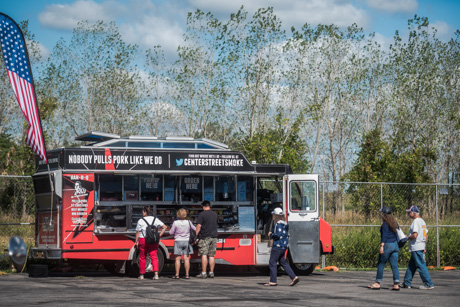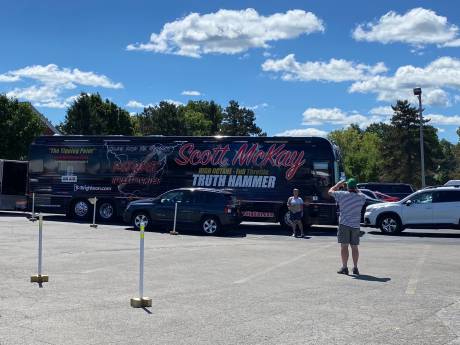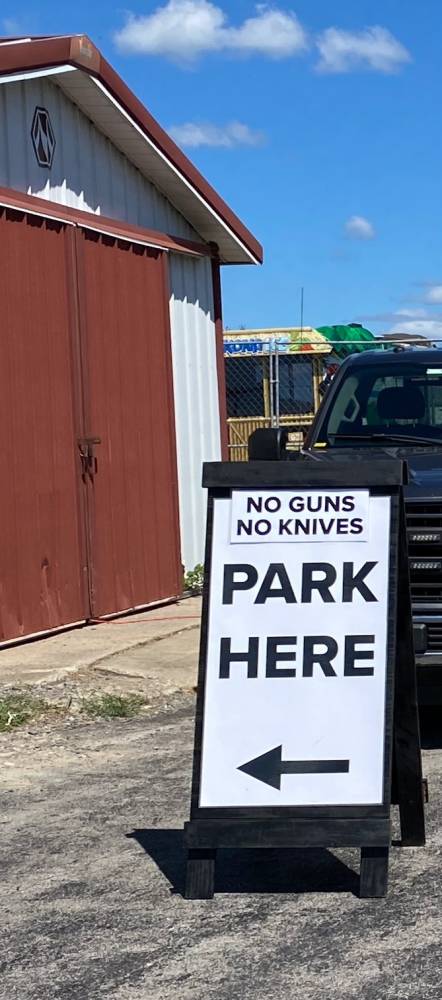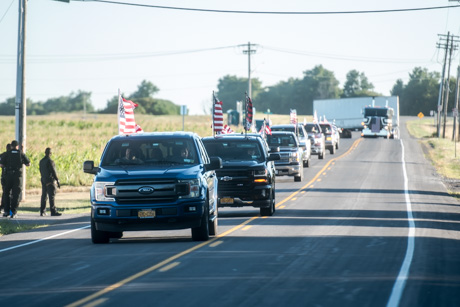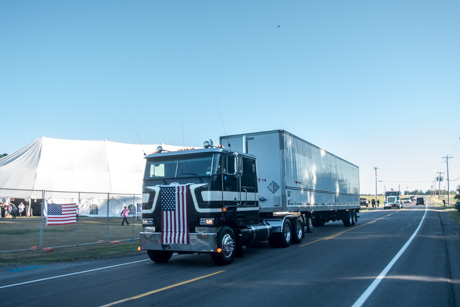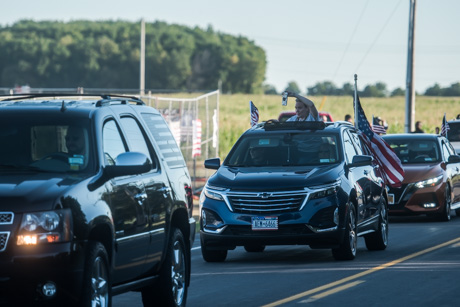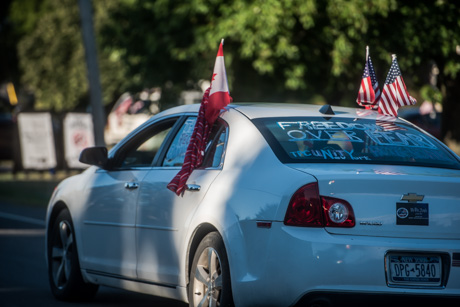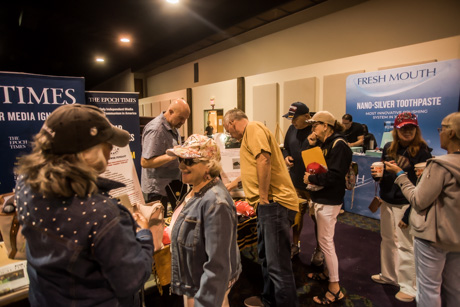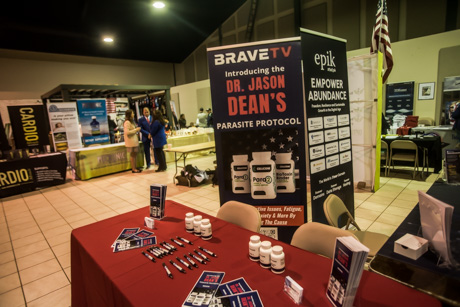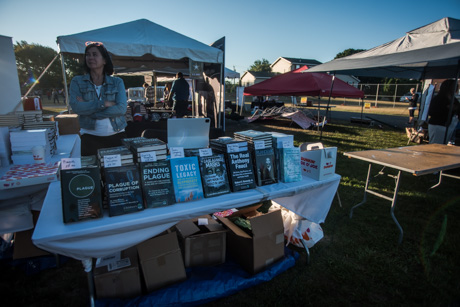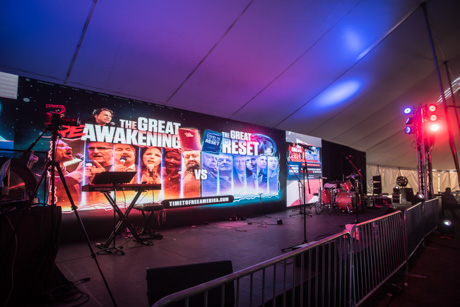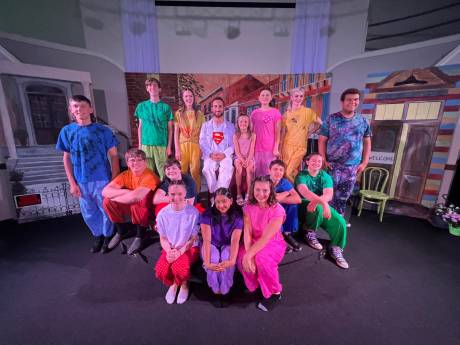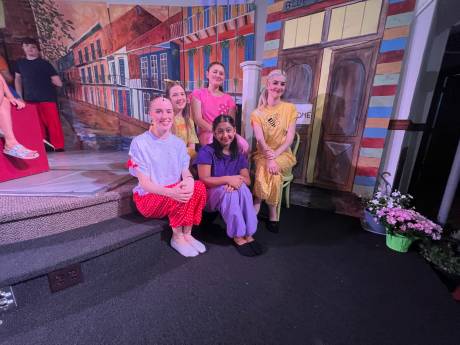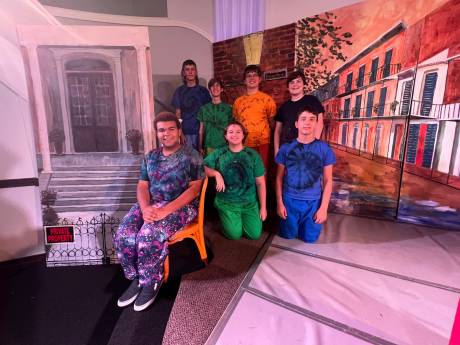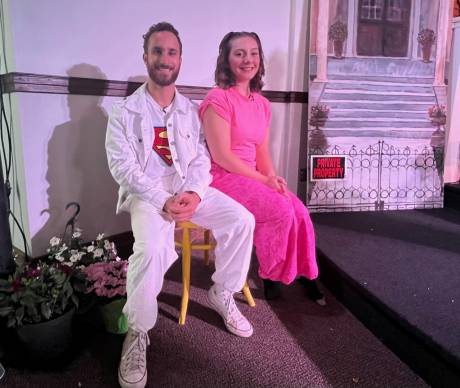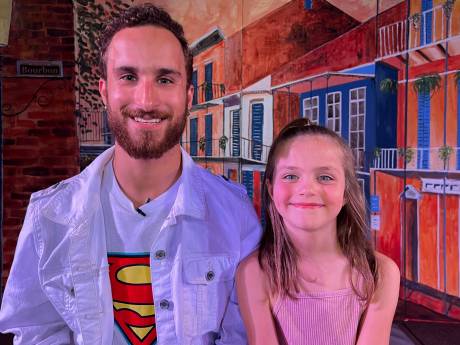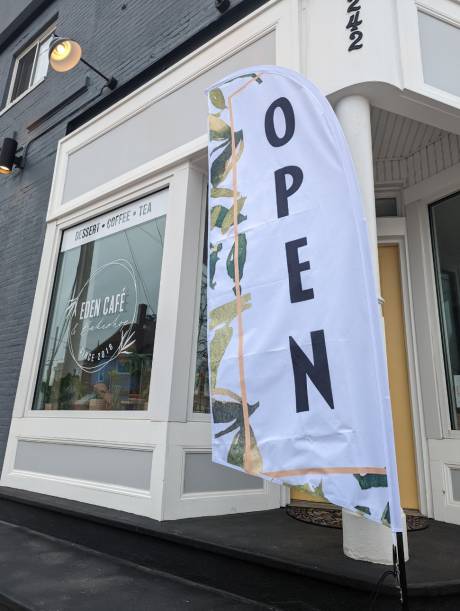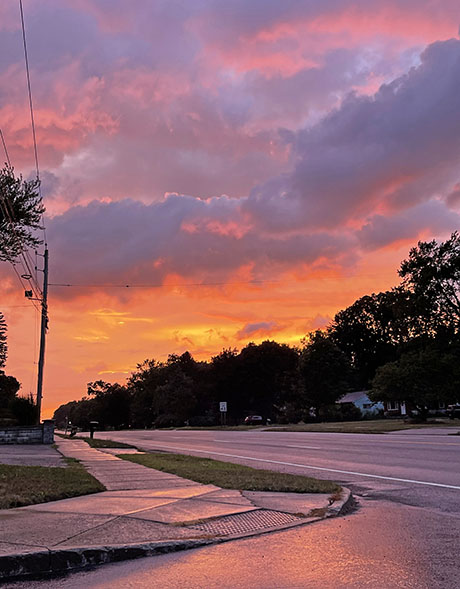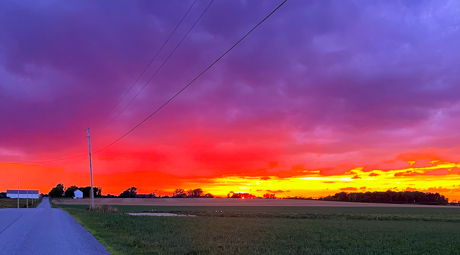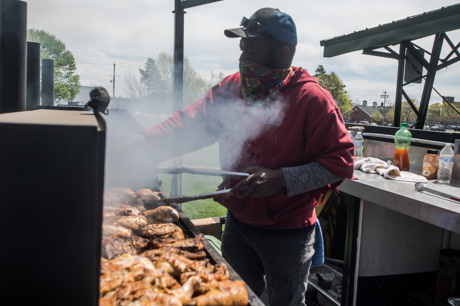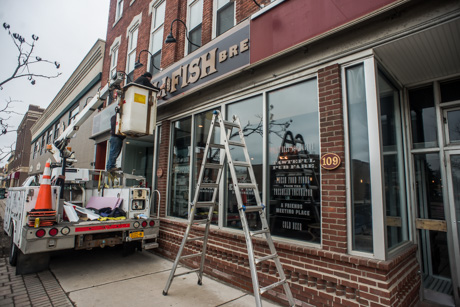Batavia pastor talks of revival and broaching 'politics' as a necessity
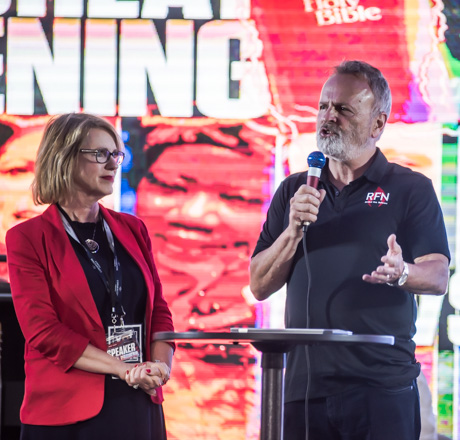
When first asked about why he was hosting the ReAwaken America Tour, Pastor Paul Doyle put it simply that protests about the event’s presence in Batavia was being overblown and that he wanted to host it at Cornerstone Church.
“I think it’s a patriotic, Godly event with reputable people that love the Lord,” Doyle said previously to The Batavian. “This isn’t just a secular event. These are Godly men and women … there’s going to be prayer, repentance, and because of that, the baptisms.”
Baptisms were, in fact, on the event schedule for Friday and again on Saturday evening. When he was bombarded with reporters’ questions after deciding to host the Tour, Doyle maintained then that “we’re gonna talk about Jesus Christ,” and didn’t feel there was any legal issue with a nonprofit church hosting a political event.
During his talk on Friday, the pastor’s voice gradually escalated to one of unbreakable conviction that he will charge ahead at full speed along with other pastors of the same mindset. Does talking about COVID, and vaccinations, critical race theory and other hot button topics make it political talk? Many colleagues aren’t bothered by going there, he said, and neither is he.
“I don't worry about offending Democrats for not worrying about talking about the issues that the church has to talk about. The Bible says in Psalms 119, it says 'the instructions of the Lord are perfect, reviving the soul.' That tells me if you want revival, you’ve got to pull up the instructions of the Lord again. They're good and the laws of God are good,” he said to a crowd that had thinned out from earlier in the day. “The Psalmist said, 'Lord, I love your laws because they're good.' And we have generations coming up that haven't even heard them before. Because the church is too afraid. We've been too intimidated. Even the Attorney General of New York is trying to bully us for not being quiet. And I'm just not gonna have any of that right now. I’m going to talk about whatever I want from the pulpit.”
He introduced his wife Lee, who is from Mississippi, and said that they were like the North and South coming together. He compared that to what is happening right now in the country.
“And there was a new battle. It's not a battle of North and South. It's a battle of good and evil. And I'm just so thankful that there's people that are standing up and wanting to have a voice once again in our country,” he said.
Doyle emphasized that he and his church have reached out to all races, and want the African-American community to stop following the narrative that they’re victims.
“They’ve been victims too long,” he said.
He’d also like to reach the LGBTQ community, encouraging listeners to ask themselves “what things have I been conditioned to think?” and wants people to rethink attending churches “where the blind are leading the blind.”
“I’m not interested in a mega church,” he said. “I’m interested in a mega movement."
When he first became aware of Mario Marillo, a motivational speaker who puts on large tent meetings across the country, Doyle admired Marillo for an event in Bakersfield, Calif. right in the center of a primarily Democratic state during pandemic shutdowns. He asked other church leaders if they were interested in a revival featuring Marillo, and the larger ones were not, claiming he was too political.
“He was preaching a message not only about the gospel, but he was calling out leftist agenda policies of (California Governor) Gavin Newsom that have made people miserable with, so he was preaching right in a blue state and a blue city, probably with blue constituents,” Doyle said. He was not afraid. And they came running to the altar. I mean, hundreds of them. And I saw healings.”
Fact Check: In the 2020 presidential election, 53.88 percent of the voters in Kern County (Bakersfield) cast ballots for Donald Trump. Kevin McCarthy, Trump supporter and House Minority Leader, won re-election in Bakersfield with 64 percent of the vote. Bakersfield is red, like all of the San Joaquin Valley, not blue.
God told Marillo to bring his show to Batavia, and Cornerstone hosted him last fall. They expected 400 to 500 people at best, and instead had 4,000 to 5,000, Doyle said.
“I’m sure you know, we were praying for a revival. I told the Lord, ‘Lord, I don't care where people come from, I don't care what they've done. I don't care what color they are. We’ve gotta see hungry people that are hungry for you.’ I just believe he's answered the prayer,” Doyle said. “And so he came out here, and he had those meetings. And it just ignited a fire in me personally. And it made me start preaching much more boldly from the pulpit.”
As for things that are “too political” Doyle said that it dawned on him that meant “things that are affecting people in our churches.”
“But since when did it leave the church and go to the political arena, we’ve got to pick it out of the political realm, and put it back in the church,” he said. “So that's what we've been doing. I don't know how many news outlets have interviewed me … And they want to know what I think about stuff. And I noticed they asked all these really loaded questions, or, how do you feel about a church hosting a political event, you know, you’re a 501 (C)3. And I said, ‘You think I'm doing this because of money? You think that intimidates me? I'm like, I'm gonna do it. We've got to have a move of God in this country.”
Further Reading: Opinion: Cornerstone Church is not risking its tax-exempt status by hosting the ReAwaken America Tour
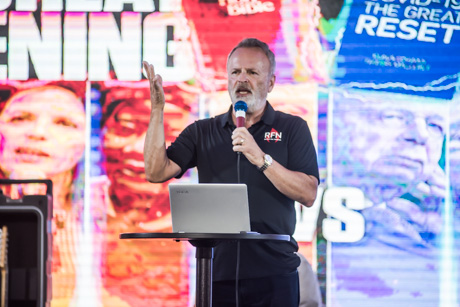
Top photo: Pastors Paul and his wife Lee Doyle on stage Friday during the first day of the ReAwaken America Tour at Cornerstone Church in Batavia. Photos by Howard Owens.




